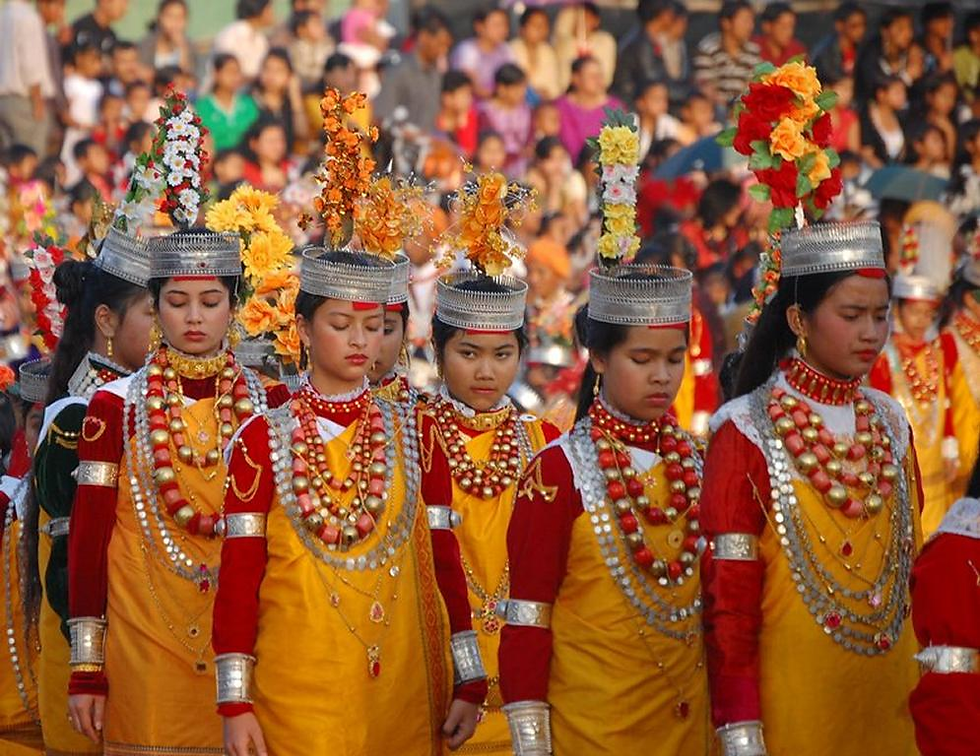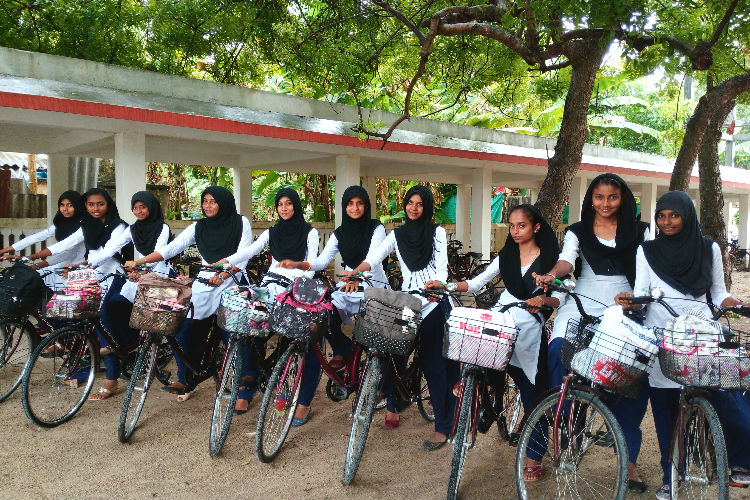As the sun rises over the diverse landscape of India, it casts a gentle light on a lesser-known aspect of the country's intricate social fabric - matrilineal societies. In a world where patriarchal norms have historically dominated, these enclaves of matrilineality stand out as unique testaments to women's roles in shaping lineage, inheritance, and community dynamics.
From the misty hills of Meghalaya to the serene shores of Lakshadweep, and the cultural heartland of Kerala to the tribal landscapes of West Bengal, matrilineal practices have woven an intricate thread through India's history. In these societies, the ancestral line is traced through mothers, grandmothers, and daughters, granting women a central position in matters of family heritage and property.

Source:- https://www.bbc.com/travel/article/20210328-why-some-indians-want-more-mens-rights
Matrilineal societies are those in which descent, inheritance and kinship are traced through the female line. In other words, children belong to their mother's clan or family, not their father's. Matrilineal societies are rare in the world, but they exist in some parts of India, especially in the north-east and south-west regions.
The Khasis and the Garos of Meghalaya
Meghalaya is a state in north-eastern India that is home to several ethnic groups, among which the Khasis and the Garos are the largest and most prominent. Both these groups follow a matrilineal system of inheritance and social organization. According to local folklore, the Khasis and the Garos come from seven divine clans that originated in South-East Asia and migrated to the hills and forests of Meghalaya. Linguistic evidence also supports this theory, as their languages belong to the Mon-Khmer branch of the Austroasiatic family.
The Khasis and the Garos have a long history of matrilineal culture that dates back to ancient times. Some historians believe that their matrilineal system was a result of their warrior lifestyle, as men often went to battle and died, leaving women to manage the household and property. Women also had to remarry frequently, making it difficult to determine the paternity of children. Therefore, it was more practical and convenient to trace descent and inheritance through the mother's line.

Source:- https://www.topfivebuzz.com/5-of-the-worlds-surviving-matrilineal-societies/
In both Khasi and Garo societies, women play a dominant role in public and domestic affairs. The youngest daughter of the family inherits the ancestral property and is responsible for taking care of her parents and siblings. She also passes on her clan name to her children. The husband moves into his wife's house after marriage and has little authority over his children or property. He can also be divorced easily if the marriage does not work out. The Khasis and the Garos have a matrilineal clan system, which means that they cannot marry within their own clan or sub-clan. They also have a matrilocal or duolocal residence pattern, which means that they either live with or near their wife's family.
The Nairs of Kerala
Kerala is a state in south-western India that has a history of matrilineal societies, especially among the Nairs, who are a prominent caste group. Often referred to as "God's Own Country," is not only known for its picturesque landscapes but also for its unique social structure.
The Nairs used to follow a system called Marumakkathayam, which means "inheritance from mother's brother". Under this system, the Nairs lived in large joint families called tharavads, which were headed by the eldest female member called karanavan or karnavar. The tharavads consisted of all the female descendants of a common ancestress and their husbands and children. The property of the tharavad was indivisible and inherited by the female members only.
The Nairs also practiced a unique form of marriage called Sambandham, which was a temporary alliance between a man and a woman from different tharavads. The sambandham was not a religious or legal contract, but a social arrangement that could be terminated at any time by either party. The children born out of sambandham belonged to their mother's tharavad and had no claim over their father's property or lineage. The father also had no obligation to support his children or wife financially or emotionally. The Nairs had a flexible and fluid system of kinship and marriage that allowed them to adapt to changing social and political circumstances.
Lakshadweep's Maternal Lineage
Lakshadweep, a cluster of islands in the Arabian Sea, is home to the island society of Minicoy, where matrilineal practices persist. Here, property and the family name are passed down through the maternal line. Women assume a central role in preserving ancestral traditions and ensuring the continuation of the family legacy.

Source:- https://www.thenewsminute.com/article/lakshadweeps-minicoy-island-kingdom-women-52786
While matrilineality remains a distinctive feature, these societies are not isolated from external influences. Modernization, globalization, and evolving gender roles have brought about changes in these communities, challenging traditional norms and reshaping the dynamics of inheritance and lineage.
The Decline of Matrilineal Societies in India
Matrilineal societies in India have faced many challenges and changes over time due to various factors such as colonialism, modernization, education, migration, legislation and globalization. Some of these factors have led to the erosion or abolition of matrilineal practices and values, while others have led to their modification or revival.
One of the major factors that contributed to the decline of matrilineal societies in India was the British colonial rule, which imposed a patriarchal legal system that favored male inheritance and authority. The British also introduced new forms of education, religion and economy that undermined the traditional roles and status of women in matrilineal societies. For example, the British banned polyandry among the Nairs, which was a practice that allowed women to have multiple husbands at the same time. The British also encouraged individual ownership of land and property, which threatened the communal nature of tharavads.
Another factor that affected matrilineal societies in India was the rise of nationalism and reform movements in the 19th and 20th centuries, which advocated for social change and gender equality. Some of these movements challenged the oppressive aspects of matrilineal systems, such as child marriage, dowry, caste discrimination and domestic violence. Some of these movements also promoted nuclear families, monogamy, patrilineal inheritance and patrilocal residence as more modern and progressive forms of family organization.
A third factor that influenced matrilineal societies in India was the process of urbanization and industrialization, which created new opportunities and challenges for women and men. Many women from matrilineal societies migrated to cities and towns in search of education, employment and independence. They also gained access to new media, technologies and cultures that exposed them to different ideas and lifestyles. Some of these women chose to adopt or adapt to the dominant patriarchal norms of society, while others resisted or rejected them. Some of these women also faced discrimination, harassment and violence in their new environments.
The Future of Matrilineal Societies in India
Matrilineal societies in India are not extinct or static, but dynamic and resilient. They have survived and transformed over centuries of social change and cultural diversity. They have also contributed to the rich and varied heritage of India.
Today, matrilineal societies in India face many challenges and opportunities in the context of globalization and development. They have to balance their traditional values and practices with their contemporary needs and aspirations. They have to preserve their identity and autonomy while engaging with the wider society and world. They have to empower their women and men to achieve their full potential and well-being.
Matrilineal societies in India are not a relic of the past, but a reality of the present and a possibility for the future. They offer alternative models of family, kinship and gender that can inspire and inform other societies in India and beyond.
They also demonstrate the diversity and complexity of human societies that cannot be reduced to simple binaries or stereotypes.
Matrilineal societies in India are a source of pride, hope and challenge for all Indians.
Article by:- Subhashree Priyadarshini
Edited by:- Shree Nidhi




Commentaires